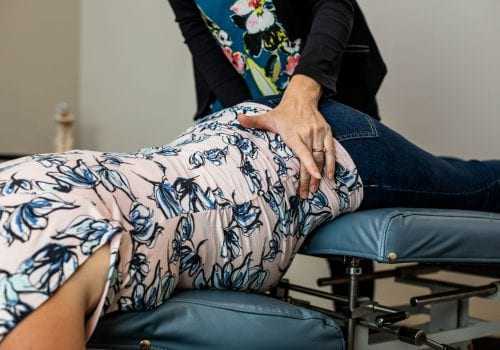
You may have thought back pain would be over along with the pregnancy, but you have found out you are wrong. How can your newborn cause back pain when they only weigh 7-10lbs? The repetitive lifting, bending over a changing table for extended periods of time, poor postures with feeding baby, and recovering from the delivery creates a perfect opportunity for lower back pain. As baby approaches one year of age, he or she may weigh around 20lbs and around two years the average toddler may weigh 25-30 pounds. For many new moms, these movements may lead to new or chronic back pain.
Here are some tips for new mothers (fathers also) to reduce bot the risk of injury and back pain:
When Lifting Your Baby:
- Keep your baby close to your body when lifting and avoid twisting movements. When placing your baby back to the ground use your legs to lower baby to the floor.
- Practice bending at your knees, squatting, keep breathing, tighten your core, and always lift with your legs.
When to Exercise:
- It is important to not rush back into exercising. Your body needs time to recover and adjust to the postpartum period. When you are cleared by your doctor to exercise it is important to understand what movements you may be able to perform safely. If you delivered baby via C-section, make sure you give yourself additional time to heal. It is important to share your goals to determine what may be realistic for your weight goals and activity level. Give yourself time and grace. I would be happy to cover what exercises to focus on and how to do them properly. How to Measure for Diastasis Recti Video
- Start with re-connecting to your breath and practice breathing into your belly. Core Bracing/Breathing Video
- Work on restoring hip and back flexibility with yoga and light stretching. Yoga is great for the mind and body.
- Core muscles are stretched and weakened during pregnancy. It is important to strengthen those muscles to prevent or reduce your chances of back pain. Dead bug Heel Slide Video
When Feeding Your Baby:
- Sit upright in a chair instead of slouching into a couch or recliner. Use pillows to help prop baby on your lap to help bring baby to your breast or bottle. This will help to avoid bending over your baby.
- Change arms when feeding your baby. This will also help baby with proper neck motion, as well.
When Carrying Your Baby:
- Avoid one-sided hip carries. This creates unnecessary strain on your back and hip muscles.
- Baby wear. If you are uncertain what carrier to use or how to use one there is a great local resource – FM Babywearing Group meets twice a month. There is a lending library and individuals who will help you find the right fit.
- When lifting the car seat follow the tips in the video to reduce shoulder, neck, and back injury and strain. Car Seat Carry Video
- Lastly, instead of standing and reaching into your car to buckle your child. Sit or kneel next to them if you are able inside the car. This will reduce overreaching and straining your back.
I am always happy to help if you continue to experience back pain. Call the office 701-730-3867 or schedule online! I am always here to help you move better, feel better, and be a better (pain-free) you!
-Melanie Dockter DC CACCP



